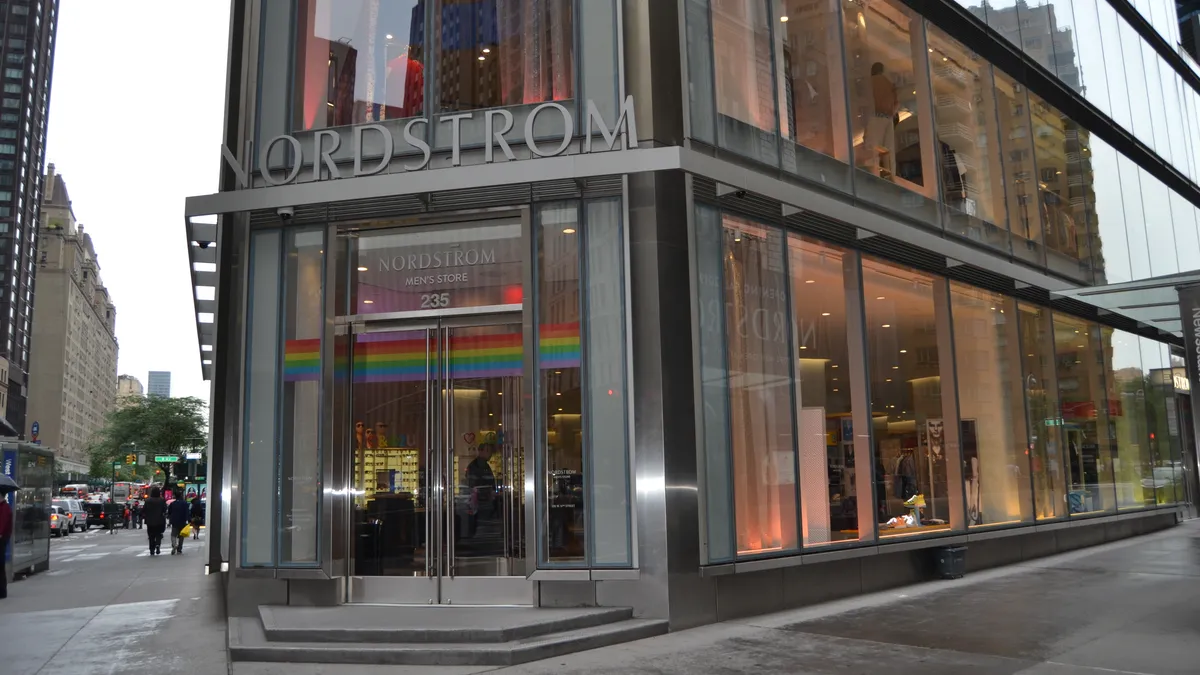The Nordstrom in Cherry Hill, New Jersey, has dressing rooms. Of course it does — it's a department store. But it doesn't just have dressing rooms for customers shopping the in-store merchandise. The store recently removed part of its high-end handbag space and replaced it with space for clothing racks and dressing rooms for customers who buy online and pick up in store. They can try on their items right there and decide in that moment whether to take home the garments.
Nordstrom, along with just about every mid- to large-sized retailer with brick-and-mortar locations, is using the concept of buy online, pick up in store (BOPIS) and buy online, ship to store (BOSS) to let customers shop how they want while driving foot traffic into stores.
While retailers with physical locations have embraced omnichannel strategies, especially to compete with online only shops, brick-and-mortar stores are still figuring out reverse logistics and how to process all the returns.
BOPIS brings customers into the store — and becomes a necessity
Despite the ease and popularity of online shopping, physical stores still drive higher conversions from visits to sales. The conversion rate is 3% for online retail versus between 35% and 60% for department stores, depending on the type of store, according to the ETP Group. Erik Nordstrom said at Shoptalk that 50% of the retailer's in-store visits start with an online session, and 35% of online sessions start with an in-store visit.
"They're discovering the asset that they're sitting on, which is their physical store," Ed Kennedy, senior director of commerce at software company Episerver, told sister publication Supply Chain Dive in an interview. "The idea is to have a consumer come into the store and say, 'hey you've already made this online purchase. Stay a while.'"
"They're discovering the asset that they're sitting on, which is their physical store."

Ed Kennedy
Senior Director of Commerce, Episerver
In its third and fourth quarter earnings reports for 2018, Macy's said in-store pickup now accounts for about 7% of online sales, and that figure nearly doubled during the holiday season. The retailer also sees about 25% associated sales on BOPIS and BOSS orders. Omnichannel options such as these have gone from perks to necessities.
At that same Shoptalk conference, Rachel Shechtman, brand experience officer for Macy's, said the company has closed nearly 100 stores since August 2016, and when Macy's closes a store, online sales decline in that geographic market.
Reverse logistics in a BOPIS world
Nordstrom has also opened Nordstrom Local stores, where, Erik Nordstrom said, "it's easier to communicate all the services we have and engage with customers."
The stores are small, but they're also places where customers can pick up items they ordered online. He said the most popular service at these stores is most likely returns, "which may not sound that exciting, but it actually is a big mover in our business."
Making online returns easy, whether it's in a store like Cherry Hill, New Jersey or at Nordstrom Local stores, helps retailers like Nordstrom process returns faster, which reduces the chance the retailer will have to discount the item if the return comes in when it's already out of date.
"It's creating a headache, and retailers haven't really nailed this."

Ed Kennedy
Senior Director of Commerce, Episerver
"They can get that product back into the store and quickly bring it back into one of their main stores, or sell it online," Carlos Castelán, founder and managing director of the Navio Group, told Supply Chain Dive in an interview. "You can imagine in a business like Nordstrom that seasonal product turns over really quickly."
The question now is "how to pool inventory from within stores and online to have a more efficient supply chain," said Castelán. He calls it the next evolution of BOPIS.
Kennedy said a lot of his mid-sized clients are still figuring out how to implement BOPIS in ways that work for them, let alone handle how that will shake up returns.
"It's creating a headache, and retailers haven't really nailed this," he said. "Just inventory records and knowing what units are in each store is still a major issue and probably holding a lot of retailers back on getting this right."
This story was first published in Supply Chain Dive: Operations weekly newsletter. Sign up here.











